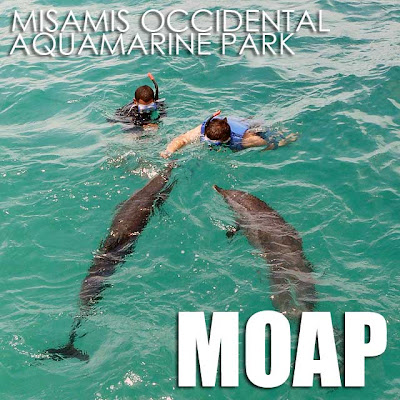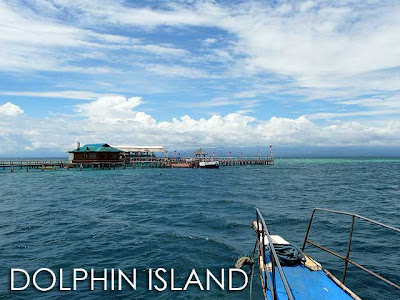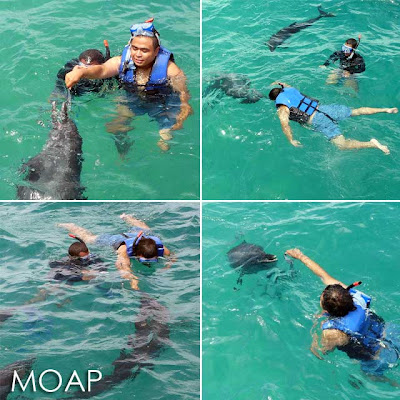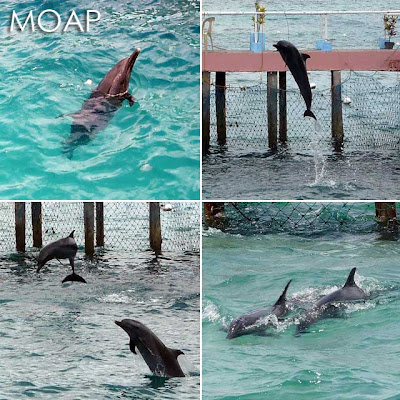It's Architect Juan Arellano's week unfortunately! Another significant work of Juan Arellano could disappear if we do not put a stop to this nonsense. Architect Dom Galicia received a report early this week that the side wings of the prewar Misamis Occidental Capitol Building in Oroquieta City are being demolished.
The Provincial Government of Misamis Occidental is violating Republic Act No. 10066 - National Cultural Heritage Act of 2009. Seeing an old photo of the capitol, Architect Toti Villalon notes, "What a beautiful Palladian structure the original was."
Here we go again! This time the local government is the proponent of the demolition! We appeal to Gov. Herminia Ramiro to stop this massacre of great architecture. We call on the people of Misamis Occidental to help us send the message across.
Thank you Gov. Herminia Ramiro!
Here is the recent update from Archt. Dom Galicia: To balance out the terrible news coming from the City of Manila, here is a long-delayed report on the March 28, 2012, meeting at the NCCA with the governor of Misamis Occidental regarding the fate of the Juan Arellano-designed capitolio.
Attendees were: NCCA Executive Director Emelita Almosara; Gov. Herminia Ramiro of Misamis Occidental; Arch. Raj Busmente, NCCA; Arch. Nelson Aquino, National Museum; Arch. Wilkie de Lumen, NHCP; Arch. EM Cuerpo and two members of his architectural team from the design-build firm of EM Cuerpo; Atty. Trixie Cruz Angeles, NCCA Legal Counsel; Ms. Kat Anuta, NCCA; Arch. Dominic Galicia, NCCA-NCMS.
After a lively yet cordial deliberation, direction was established regarding how best to respect and sustain the exemplary cultural and historical value of the capitolio, which served as the capital of a Free Philippines in the early days of World War 2. Gov. Ramiro instructed the EM Cuerpo design-build team to follow the NCCA recommendation to restore the Juan Arellano capitolio (including restoring the Great Hall, now subdivided into two floors and attic) and to house the expansion in a new separate structure to be built in the back. The new structure will act as a quiet background building, perhaps employing the lightness and transparency of green architecture. The Juan Arellano capitolio could one day house the provincial museum, of which there is none so far. The Great Hall could one day be used as the Session Hall. EM Cuerpo will submit three schemes for Gov. Ramiro's approval, with NCCA consultation.
EM Cuerpo raised concerns about the legal and Commission-on-Audit ramifications of the change in the design and the terms of reference. NCCA Legal Counsel Trixie Cruz Angeles allayed those concerns by explaining the power of the Heritage Law. NCCA would be preparing a letter to Gov. Ramiro which will serve as a document of rationale.
It was a remarkable demonstration of political will, once Gov. Ramiro made the decision to restore the capitolio and build a separate annex in the back. Generations will remember this decision of Gov. Ramiro. Not just Misamis Occidental, not just Mindanao, but the nation as a whole will be grateful.
Showing posts with label Misamis Occidental. Show all posts
Showing posts with label Misamis Occidental. Show all posts
Friday, February 10, 2012
Thursday, August 05, 2010
Misamis Occidental: Our Town Cafe's chorizo taco in Oroqiueta City

While we were driving around Oroquieta City, I noticed a sign which said Our Town Cafe but didn't give it second thought. I should have! That evening, my host received a text message that I should try out the Chorizo Taco at Our Town Cafe. It was my last night in Oroquieta so it was now or never. But we got the number of the cafe when it was about to close.
It was funny since we pleaded with the owner to prepare one serving of the Chorizo Taco since I really wanted to try it out before leaving Oroquieta. After some convincing, the owner relented and we were to proceed to the restaurant in 20 minutes.
We were met by the owner Renee Evangelista who brought out a plate with two soft shell tacos. At Php80 per serving, that's Php40 a taco, it was a bargain! And the Chorizo Taco was really good and it definitely made our night! They make the Spanish chorizo and soft taco shells themselves. Plus they add a cream sauce to go with the taco which makes it taste even better.
They also serve barbecue and ribs, Spanish rice and frozen chorizo if you want to take home some. Too bad I couldn't order anymore since it was way beyond closing time. I'll definitely come back!
Special thanks to MJ and Sim Moneva for being such gracious hosts during my stay in Oroquieta City!
Wednesday, August 04, 2010
Misamis Occidental: Halang-halang in Oroquieta City

Halang-halang literally means spicy-spicy in Cebuano. In some parts of Mindanao, it's a chicken dish with coconut milk and chili. But in Oroquieta City, halang-halang is a spicy clear beef broth which is served together with pork and chicken barbecue, and puso (rice steamed in coconut leaves).


If you happen to be in Oroquieta City, make sure to drop by the halang-halang strip beside the city plaza. Make sure you're there late in the afternoon or early in the evening because the halang-halang and barbecue run out really quick especially in the more popular stalls.
I discovered that the hard way since we went out for dinner quite late and ended up missing the delicious barbecue in one of the stalls. So I made sure to go again the next day, this time in the afternoon, for another serving of halang-halang.
Tuesday, August 03, 2010
Misamis Occidental: Swimming with dolphins at the Misamis Occidental Aquamarine Park (MOAP)

A lot of people had suggested that I visit Dolphin Island at the Misamis Occidental Aquamarine Park (MOAP) to check out their swimming with dolphins experience. It had been advertised as a Dolphin Rescue Center where injured dolphins are brought to recover. In fact, when you land in Ozamiz Airport, one of the first things you'll see is a tarpaulin promoting the place. So it was worth checking out.

Entrance to MOAP is Php10 per head. From the MOAP Visitors' Center, you walk to the ferry port where another ticket counter will charge you Php250 for the round-trip boat ride and entrance to Dolphin Island which is about 20 minutes away.

At Dolphin Island, you pay another Php300 for the swimming with the dolphins experience and gear rental. A guide will take you into the enclosure and hold the bag of fish you will feed the dolphins. To be honest, I actually enjoyed the experience because the dolphins were quite playful as I fed them the fish. Unlike the dolphin shows which has elicited a lot of opposition from animal rights activists, they do not train the dolphins here to perform any tricks. They just swim around, albeit in captivity.
I had been asked by animal rights friends to find out if the dolphins were released after. Unfortunately, MOAP does not release the dolphins even after they recover. They are kept there for entertainment purposes. While I personally understand the existence of zoos, I do not agree that MOAP should continue to call it the Dolphin Rescue Center because part of rescue is release after recovery. I mean let's be straightforward that the dolphins there are kept in captivity even after recovery. So when people visit, they know what they are visiting.
This project had been promoted by none other than President Arroyo. She visited the island together with the Australian Ambassador. From what I understand, AusAID was somehow part of this project.

While dolphins in captivity are seen as okay by the general public (part of my childhood were visits to Ocean Park and SeaWorld), animal rights advocates are against it. Just to open the discussion, I would like to share Dolphins in Captivity: FAQs for you to learn about the issues behind dolphins in captivity. So if you do visit MOAP and try out their swimming with dolphins experience, at least these issues are clear to you.
After you swim with dolphins, your guide will offer to take you to the coral reefs around the island. There is no fee for this but you'll have to give your guide a tip. I was floored by the variety of coral and fish species around the island. My guide gave me another piece of fish which I held in the water for other fish to eat. By the time I knew it, I only had bones left! There were also a lot of Giant Clams in the area.

There's another pool were they keep a pawikan. But watch out because it bites! Lunch is also available on the island so no need to worry about food. During low-tide, the sand around the area surfaces. But the island disappears when it's high-tide. So you can hang around there for some swimming.
Back at the mainland, I walked around the park while waiting for my ride back to Oroquieta City. I saw a wooden bridge that led to a mangrove forest which turned out to be a zoo. I was quite disconcerted seeing a dozen or so monkeys tied up with chains around the waist to bamboo poles. Looking at them doing nothing but walking up and down the poles was not a happy experience. For a project that won the Galing Pook Award in 2005, I was a bit disappointed to see how they treated the monkeys. I hope the Provincial Government of Misamis Occidental does something about the zoo.
Anyway, I left with mixed feelings. While I genuinely enjoyed the swimming with the dolphins experience, I couldn't help but ponder on the issues behind dolphins in captivity.
Monday, August 02, 2010
Misamis Occidental: Fuerte de la Concepcion y del Triunfo in Ozamiz and the Jimenez Church

When you are in Ozamiz, there are two heritage sites worth visiting in the area: the Fuerte de la Concepcion y del Triunfo Historical Landmark in Ozamiz City, and the Jimenez Church, a National Cultural Treasure and probably the best-preserved Spanish colonial church in Mindanao, located in the town of Jimenez about 20 minutes from Ozamiz.
The Ozamiz Fort, just like Fort Pilar in Zamboanga City, has one side of its walls transformed into a religious shrine. Built in 1756 out of coral stone, it has four bastions (baluarte) namely San Fernando, San Jose, Santiago and San Ignacio. It became a shrine of the Immaculate Conception. The image also referred to as Virgen sa Cota is venerated every July 16 by devotees.

Before proceeding to Jimenez, we had lunch along the way at Palayan Seafoods Restaurant beside the Misamis Occidental Aquamarine Park (MOAP). We ordered native chicken for lunch. And you could request them to cook the chicken in various ways: tinonuan, adobo and tinola. The adobo in Mindanao is sweet and spicy, unlike the Luzon version which is on the sour side. Tinonuan is a coconut milk-based soup.


The San Juan Bautista Church in Jimenez, Misamis Occidental was built in the 19th century by the Augustinian Recollects. According to the National Commission for Culture and the Arts (NCCA), it has retained its original clock metalwork and paintings. It adds that the ceiling of painted canvass which was installed in 1898 actually concealed an earlier mural painted directly on the wooden ceiling.
What I like about Jimenez town is the fact that many of its ancestral houses are still intact. If we had more time, it would have been nice to walk around the town and appreciate its old houses. From the Jimenez Church, we drove further north to Oroquieta City.

Update (08/03/2010): I almost forgot to include one more interesting heritage structure in Misamis Occidental. And that would be the Misamis Occidental Provincial Capitol in Oroquieta City. It looks similar to the capitol building of Surigao del Norte. But unfortunately, there's a basketball court right in front of the grand building! Such a shame!
Subscribe to:
Comments (Atom)

